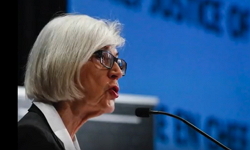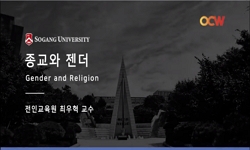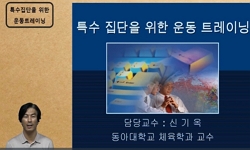The purpose of this paper is to study the social anxiety and the gender conception of the British middle class in the Edwardian era in James Barrie's play Peter Pan. It has been generally accepted that this work is a fantasy of imagination and a fairy...
http://chineseinput.net/에서 pinyin(병음)방식으로 중국어를 변환할 수 있습니다.
변환된 중국어를 복사하여 사용하시면 됩니다.
- 中文 을 입력하시려면 zhongwen을 입력하시고 space를누르시면됩니다.
- 北京 을 입력하시려면 beijing을 입력하시고 space를 누르시면 됩니다.

환상의 씨줄과 현실의 날줄 : 제임스 배리의 희곡 『피터팬』에 나타나는 20세기 초 영국 중간 계급의 사회적 불안과 젠더 개념 = Fantasy and Reality : The Social Anxiety and the Gender Conception of the British Middle Class in the Beginning of the 20th Century in James Barrie's Play Peter Pan
한글로보기부가정보
다국어 초록 (Multilingual Abstract)
The purpose of this paper is to study the social anxiety and the gender conception of the British middle class in the Edwardian era in James Barrie's play Peter Pan. It has been generally accepted that this work is a fantasy of imagination and a fairy tale. However, Barrie's five-act play reflects a variety of social atmospheres of the time when it was written.
As industrial technologies evolved following industrialization, they brought about radical changes in British society. This particularly affected the middle class, located between the upper and working classes, by generating financial and social instability for them The Darling House, the place where the story begins, and the Darling family represent the anxious middle class of the time.
Mr. Darling is anonymous at work and known only by his stool; he is even compared to a postage stamp. He has already become a part of the technology of industrialization. At home, he often tries to confirm that he is the breadwinner and the protector of the family. However, his lack of a central role in his house shows that he is a failed breadwinner as well as a patriarchal child.
It has been a theatrical convention that Captain Hook was played by the actor performing the role of Mr. Darling. Hook is an alter ego of Mr. Darling, who satisfied the male audience's desire to become characters of strong masculinity, in contrast to their own. In addition, Peter Pan, who wouldn't grow up, is a symbol of impossible longing for freedom from social responsibility, masculinity and even time.
It is well known that the Victorians and Edwardians tried to seek refuge from the rapidity with which social and economic change was taking place. For the middle class, home and family was the most important refuge. This cult of domesticity epitomized the concept of the ideal woman who is feminine, pure, maternal and asexual. By contrast, the lower class women were regarded as common, emotionally active and even sensual.
Peter Pan depends on stereotypes of this dual conception of femininity of the era. Mrs. Darling and Wendy represent the middle class housewife and daughter, while Tinker Bell and Tiger Lily represent the lower class outcasts. In addition, it is claimed that the imperialistic desire of the British society was transmitted to the depiction of Tiger Lily.
Barrie tried to present the British audience of the Edwardian era with a fantasy to temporarily free them from the pressures of reality. However, it was only a male fantasy to satisfy the male audience, which furthered the biased gender conception of the period. The play revealed the ideology of the Edwardian atmosphere. It means that Barrie was one of the typical British middle class men who lived in the beginning of the 20^(th) century, even though he had intense aspirations toward Neverland himself.
참고문헌 (Reference)
1 김상수, "영국 ‘중간계급’의 형성: 신정치사적 접근" 23 : 1-38, 1999
2 Bruley, Sue, "Women in Britain since 1900" St. Martin’s 1999
3 Barrie, James M, "When Wendy Grew Up: An Afterthought" Thomas Nelson & Sons 1957
4 Swisher, Clarice, "Victorian England" Greenhaven 2000
5 Gorham, Deborah, "The Victorian Girl and the Feminine Ideal" Croom Helm 1982
6 Jack, R.D.S, "The Road to the Never Land: A Reassessment of J. M. Barrie’s Dramatic Art" Aberdeen UP 1991
7 Hanson, Bruce K, "The Peter Pan Chronicles: The Nearly 100 Year History of “The Boy Who Wouldn’t Grow Up.”" Birch Lane 1993
8 Egan, Michael, "The Neverland of Id: Barrie, Peter Pan, and Freud" Yale UP 10 : 37-55, 1982
9 Jack, R.D.S, "The Manuscript of Peter Pan" 18 : 101-113, 1990
10 Morse, M. Joy, "The Kiss: Female Sexuality and Power in J. M. Barrie’s Peter Pan. in:James Barrie’s Peter Pan: In and Out of Time" Scarecrow 281-302, 2006
1 김상수, "영국 ‘중간계급’의 형성: 신정치사적 접근" 23 : 1-38, 1999
2 Bruley, Sue, "Women in Britain since 1900" St. Martin’s 1999
3 Barrie, James M, "When Wendy Grew Up: An Afterthought" Thomas Nelson & Sons 1957
4 Swisher, Clarice, "Victorian England" Greenhaven 2000
5 Gorham, Deborah, "The Victorian Girl and the Feminine Ideal" Croom Helm 1982
6 Jack, R.D.S, "The Road to the Never Land: A Reassessment of J. M. Barrie’s Dramatic Art" Aberdeen UP 1991
7 Hanson, Bruce K, "The Peter Pan Chronicles: The Nearly 100 Year History of “The Boy Who Wouldn’t Grow Up.”" Birch Lane 1993
8 Egan, Michael, "The Neverland of Id: Barrie, Peter Pan, and Freud" Yale UP 10 : 37-55, 1982
9 Jack, R.D.S, "The Manuscript of Peter Pan" 18 : 101-113, 1990
10 Morse, M. Joy, "The Kiss: Female Sexuality and Power in J. M. Barrie’s Peter Pan. in:James Barrie’s Peter Pan: In and Out of Time" Scarecrow 281-302, 2006
11 Wiggins, Kayla McKinney, "The Duplicity of Fairyland in the Plays of J. M. Barrie. in:James Barrie’s Peter Pan: In and Out of Time" Scarecrow 79-104, 2006
12 Rose,Jacqueline, "The Case of Peter Pan or The Impossibility of Children’s Fiction" Macmillan 1984
13 Pearson, Michael, "The Age of Consent: Victorian Prostitution and Its Enemies" Newton Abbot 1972
14 Cohen, "Talk on the Wilde Side: Toward a Genealogy of a Discourse on Male Sexualities" Routledge 1993
15 McHugh, Paul, "Prostitution and Victorian Social Reform" St. Martin’s, 1980
16 Barrie,James M, "Peter Pan in Kensington Gardens & Peter and Wendy" Oxford UP 1991
17 Barrie, James M, "Peter Pan and Other Plays" Oxford UP 1995
18 Zipes, Jack, "Negating History and Male Fantasies through Psychoanalytic Criticism" 18 : 141-143, 1990
19 Knowles, Ric, "Joanne Tompkins & W.B. Worthen, Eds. Modern Drama: Defining the Field" U of Toronto P 2003
20 Clark, Emily, "James Barrie’s Peter Pan: In and Out of Time" Scarecrow 303-319, 2006
21 White, Donna R, "James Barrie’s Peter Pan: In and Out of Time" Scarecrow 2006
22 Dunbar, Janet, "J. M. Barrie: The Man behind the Image" Houghton Mifflin 1970
23 Birkin, Andrew, "J. M. Barrie & the Lost Boys: The Love Story that Gave Birth to Peter Pan" Clarkson N. Potter 1979
24 Wullschläger, Jackie, "Inventing Wonderland: The Lives and Fantasies of Lewis Carroll" Free P 1995
25 Chaney, Lisa, "Hide-and-Seek with Angels: A Life of J. M. Barrie" Hutchinson 2005
26 Wilson, Ann, "Hauntings: Anxiety, Technology and Gender in Peter Pan. in: Modern Drama: Defining the Field" U of Toronto P 128-143, 2003
27 Rutherford, Jonathan, "Forever England: Reflections on Race, Masculinity and Empire" Lawrence 1997
28 Groenewegen, Peter, "Feminism and Political Economy in Victorian England" Edward Elgar 1994
29 Coats, Karen, "Child-Hating: Pete Pan in the Context of Victorian Hatred. in:James Barrie’s Peter Pan: In and Out of Time" Scarecrow 3-22, 2006
30 Gibson, Lois Rauch, "Beyond the Apron: Archetypes, Stereotypes, and Alternative Portrayals of Mothers in Children’s Literature" 13 : 177-181, 1988
31 Roth, Christine, "Babes in Boy-Land: J. M. Barrie and the Edwardian Girl. in:James Barrie’s Peter Pan: In and Out of Time" Scarecrow 47-67, 2006
동일학술지(권/호) 다른 논문
-
- 새한영어영문학회
- 권현주
- 2009
- KCI등재
-
- 새한영어영문학회
- 김경희
- 2009
- KCI등재
-
- 새한영어영문학회
- 김용규
- 2009
- KCI등재
-
- 새한영어영문학회
- 박희본
- 2009
- KCI등재
분석정보
인용정보 인용지수 설명보기
학술지 이력
| 연월일 | 이력구분 | 이력상세 | 등재구분 |
|---|---|---|---|
| 2026 | 평가예정 | 재인증평가 신청대상 (재인증) | |
| 2020-01-29 | 학술지명변경 | 외국어명 : The New Korean Journal of English Lnaguage & Literature -> The New Korean Journal of English Language & Literature |  |
| 2020-01-01 | 평가 | 등재학술지 유지 (재인증) |  |
| 2017-04-21 | 학회명변경 | 영문명 : 미등록 -> The New Korean Association of English Language and Literature |  |
| 2017-01-01 | 평가 | 등재학술지 유지 (계속평가) |  |
| 2013-01-01 | 평가 | 등재학술지 유지 (등재유지) |  |
| 2010-01-01 | 평가 | 등재학술지 유지 (등재유지) |  |
| 2008-01-01 | 평가 | 등재학술지 유지 (등재유지) |  |
| 2005-01-01 | 평가 | 등재학술지 선정 (등재후보2차) |  |
| 2004-01-01 | 평가 | 등재후보 1차 PASS (등재후보1차) |  |
| 2003-01-01 | 평가 | 등재후보학술지 선정 (신규평가) |  |
학술지 인용정보
| 기준연도 | WOS-KCI 통합IF(2년) | KCIF(2년) | KCIF(3년) |
|---|---|---|---|
| 2016 | 0.17 | 0.17 | 0.18 |
| KCIF(4년) | KCIF(5년) | 중심성지수(3년) | 즉시성지수 |
| 0.19 | 0.17 | 0.441 | 0.06 |




 RISS
RISS DBpia
DBpia






